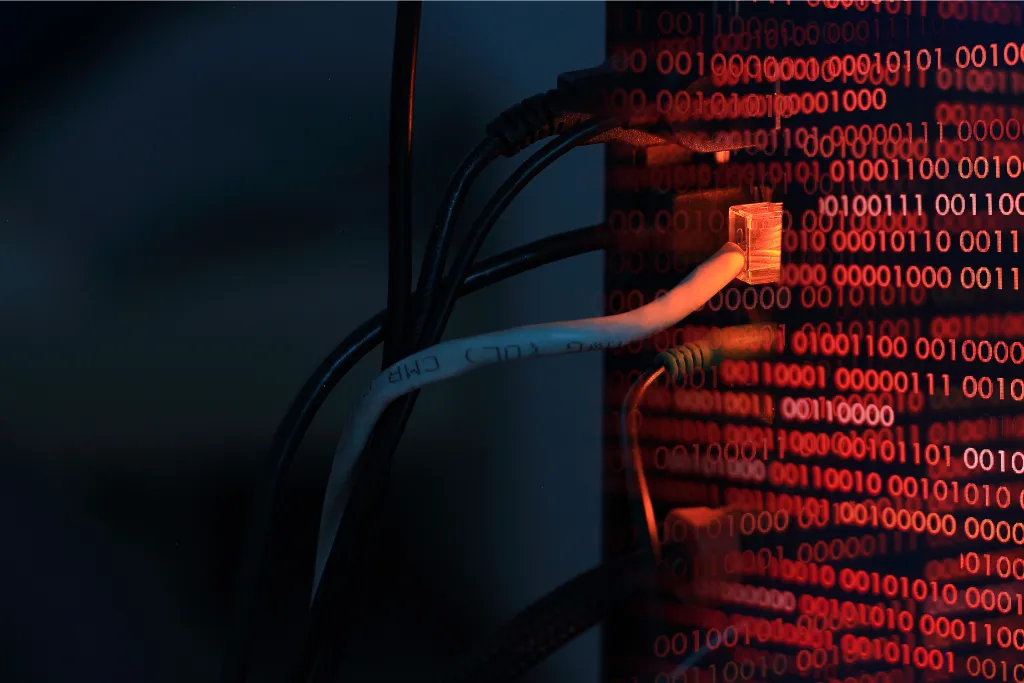Physical Address
304 North Cardinal St.
Dorchester Center, MA 02124
Physical Address
304 North Cardinal St.
Dorchester Center, MA 02124

In today’s digital age, where almost everything is connected to the internet, cybersecurity has become a major concern. The use of technology has increased vulnerabilities in the cyber world, which has led to a surge in cyberattacks.
Cyber security controls are measures that organizations can take to protect themselves from such attacks. In this blog post, we will provide you with a primer on cyber security controls in 2024.
We will discuss the importance of cyber security controls and their types, including technical security controls, administrative security controls, and physical security controls.
Additionally, we will provide you with guidelines for implementing these controls effectively and managing them for optimal results. Lastly, we will explore how the landscape of cyber security controls has evolved by 2024 and how essential continuous vulnerability management is for ensuring your organization’s safety in today’s digital world.

Implementing cyber security controls is crucial to safeguard information and systems from cyber threats. These controls serve as countermeasures against unauthorized access and data breaches.
By implementing cyber security controls, organizations can ensure the confidentiality, integrity, and availability of information. They also mitigate security risks and comply with industry regulations.
Additionally, investing in cyber security controls enhances customer trust and demonstrates a commitment to data security.
Cyber security controls encompass various measures and safeguards implemented to protect information and systems from cyber threats. These controls comprise technical, administrative, and physical security measures.
Their purpose is to prevent, detect, and respond to security incidents, ensuring the confidentiality, integrity, and availability of information. Examples of cybersecurity controls include authentication mechanisms, intrusion detection systems, and malware prevention tools.
By implementing these controls, organizations establish a robust layer of security to counteract potential risks and better manage cyber security programs.
In 2024, businesses face an unprecedented level of cyber threats due to the rapid advancement of technology and increased reliance on digital systems.
Robust cyber security controls are more critical than ever in safeguarding against data breaches, unauthorized access, and other cyber risks. They play a vital role in protecting sensitive information and ensuring operational continuity.
Staying up-to-date with cyber security controls is essential for mitigating emerging risks in an evolving threat landscape.

In the realm of cybersecurity, various types of controls play a crucial role in safeguarding information and systems from cyber threats. These controls can be broadly categorized into three main types: technical, administrative, and physical.
Technical security controls involve the use of technologies like firewalls, encryption, and intrusion prevention systems to secure information systems. On the other hand, administrative security controls focus on policies, procedures, and training to manage and enforce security requirements.
Meanwhile, physical security controls aim to protect physical assets, such as servers and data centers, through measures like surveillance cameras and access control systems. Combining these control types forms a comprehensive cybersecurity strategy, providing multiple layers of defense against cyber threats.
Technical security controls, utilizing technology to protect information systems and data, are a crucial aspect of cybersecurity. Examples include firewalls, intrusion detection systems, and antivirus software. Encryption ensures the safe transmission and storage of sensitive data.
Endpoint detection and response tools help detect and mitigate advanced threats. Patch management keeps systems updated with the latest security patches. These controls are essential in maintaining the integrity and security of organizations’ digital assets.
Administrative security controls encompass policies, procedures, and practices that manage and enforce security requirements. Access control policies define information and resource access privileges within an organization.
Security awareness training educates employees on risks and best practices. Incident response plans outline steps for handling security breaches. Regular security audits ensure compliance and identify areas for improvement.
Physical security controls play a crucial role in safeguarding the physical assets of an organization. These controls focus on measures such as surveillance cameras and access control systems to prevent unauthorized access to sensitive areas like data centers.
Secure facilities with controlled entry points and visitor management systems enhance overall physical security. Environmental controls, such as fire suppression systems and temperature monitoring, protect equipment and data from potential damage. Regular maintenance and inspections ensure the effectiveness of these physical security controls.

Implementing cyber security controls effectively necessitates a systematic and well-planned approach. To begin, organizations must conduct a risk assessment to identify vulnerabilities and prioritize control implementation.
Developing a comprehensive cybersecurity program aligned with industry best practices is vital. Regular monitoring and evaluation of implemented controls ensure their ongoing effectiveness. Successful control implementation requires collaboration between IT, security professionals, and other stakeholders.
To implement technical controls effectively, organizations must first identify the specific controls required based on their risk profile and security requirements. Evaluating different control options is crucial before selecting the most suitable ones.
Developing a detailed implementation plan with clear timelines, responsibilities, and resource allocation is essential. Testing and validating the effectiveness of implemented controls through penetration testing and vulnerability assessments is a vital step.
Regularly reviewing and updating technical controls to address emerging threats and vulnerabilities is necessary for maintaining strong information security.
To implement administrative controls effectively, organizations should define security policies and procedures aligned with industry standards and best practices. Regular security awareness training ensures employees understand their roles.
Establishing an incident response plan and conducting regular drills tests its effectiveness. Regular reviewing and updating of administrative controls is crucial to address changes in the threat landscape and regulatory requirements. Auditing and assessments help monitor and enforce compliance.
Implementing physical controls is vital in safeguarding resources and sensitive information. These controls include surveillance cameras, access control systems, and security guards. Regular audits are necessary to ensure that the physical controls are functioning properly.
They should be designed to mitigate potential threats and vulnerabilities, following industry best practices and standards such as those provided by NIST for physical control implementation.

Implementing a comprehensive cybersecurity program involves assessing risks, selecting appropriate controls, and regularly monitoring their effectiveness. Prioritizing preventive controls is crucial in stopping attacks before they occur. Detective controls, like intrusion detection systems, help identify and respond to security incidents. Regular reviews and updates of cyber security controls are necessary to address evolving threats and vulnerabilities.
Regularly auditing and updating cybersecurity controls is crucial for maintaining an effective cybersecurity posture. Through audits, weaknesses or gaps in control implementation can be identified and addressed.
Updates to controls should be made based on audit results and changes in the threat landscape. By continuously assessing and improving controls, organizations can ensure they are aligned with security requirements and mitigate potential risks.
Employees play a crucial role in maintaining information security within an organization. Through training programs, they can gain a better understanding of basic risk concepts and examples of different types of security controls.
Training should cover common security risks, best practices, and procedures. Awareness programs help employees recognize potential security incidents and report them promptly. Regular training and awareness programs empower employees to be proactive in safeguarding information.
Despite implementing various preventive measures, organizations may still encounter security incidents. To effectively handle these incidents, it is crucial to have a well-defined incident response plan in place.
This plan should include steps for identifying, containing, and mitigating the impact of security incidents. Prompt reporting and communication are essential during an incident to minimize damage and prevent further compromise. After resolving an incident, conducting a thorough review helps identify areas for improvement.
The ever-evolving threat landscape has necessitated the advancement of cyber security controls. With the emergence of new cyber threats and the implementation of advanced technologies like AI and machine learning, organizations are integrating cybersecurity controls into their overall risk management strategies to combat the growing reliance on technology.
The ever-evolving cyber landscape has given rise to new risks and threats that organizations must contend with. Cybersecurity controls, like the ones described earlier, have had to adapt to these emerging challenges.
Today, businesses face cyber threats such as ransomware and social engineering attacks that are constantly evolving and becoming more sophisticated. The interconnectedness of devices and systems also creates additional avenues for potential cyber attacks.
It is crucial for organizations to stay updated on the latest threat intelligence and continuously monitor and analyze cyber threats to inform the implementation of effective controls.
Advances in control technologies have led to more sophisticated and proactive cybersecurity measures. Machine learning algorithms detect patterns and anomalies, enhancing the ability to identify potential security breaches.
Real-time visibility and response capabilities are provided through endpoint detection and response (EDR) tools. Security information and event management (SIEM) platforms help consolidate and analyze security logs. The use of automation and orchestration improves response times and reduces human error.
Continuous vulnerability management is vital in 2024 to safeguard information systems. It involves ongoing identification, assessment, and mitigation of vulnerabilities.
Organizations must regularly scan and patch systems and applications to minimize the risk of cyber attacks in an evolving threat landscape.
In conclusion, cyber security controls are essential in today’s digital landscape, and their importance will only continue to grow in 2024. It is crucial for organizations to understand and implement different types of controls – technical, administrative, and physical – to mitigate the risk of cyber threats.
Effective implementation of these controls involves following proper steps and guidelines, regularly auditing and updating controls, providing training and awareness programs for employees, and handling security incidents efficiently.
As the cyber landscape evolves, it is imperative to stay vigilant and adapt to new threats and risks. Continuous vulnerability management plays a crucial role in ensuring the effectiveness of cyber security controls.
By regularly assessing vulnerabilities, applying patches and updates, and staying up-to-date with the latest control technologies, organizations can maintain a strong defense against cyber attacks.
Investing in robust cyber security controls and management is not just a necessary measure, but also a proactive step towards protecting sensitive data and maintaining trust in the digital age.